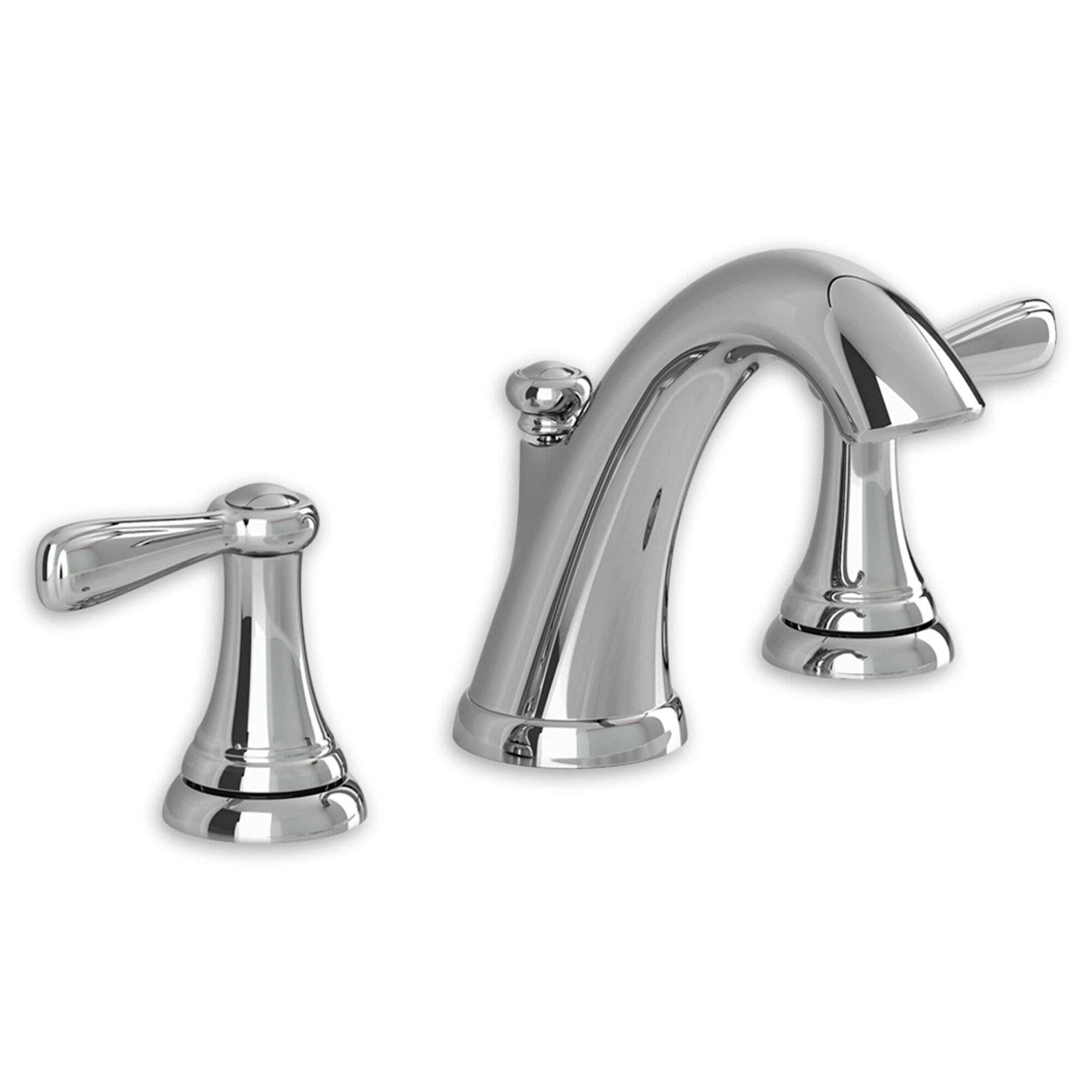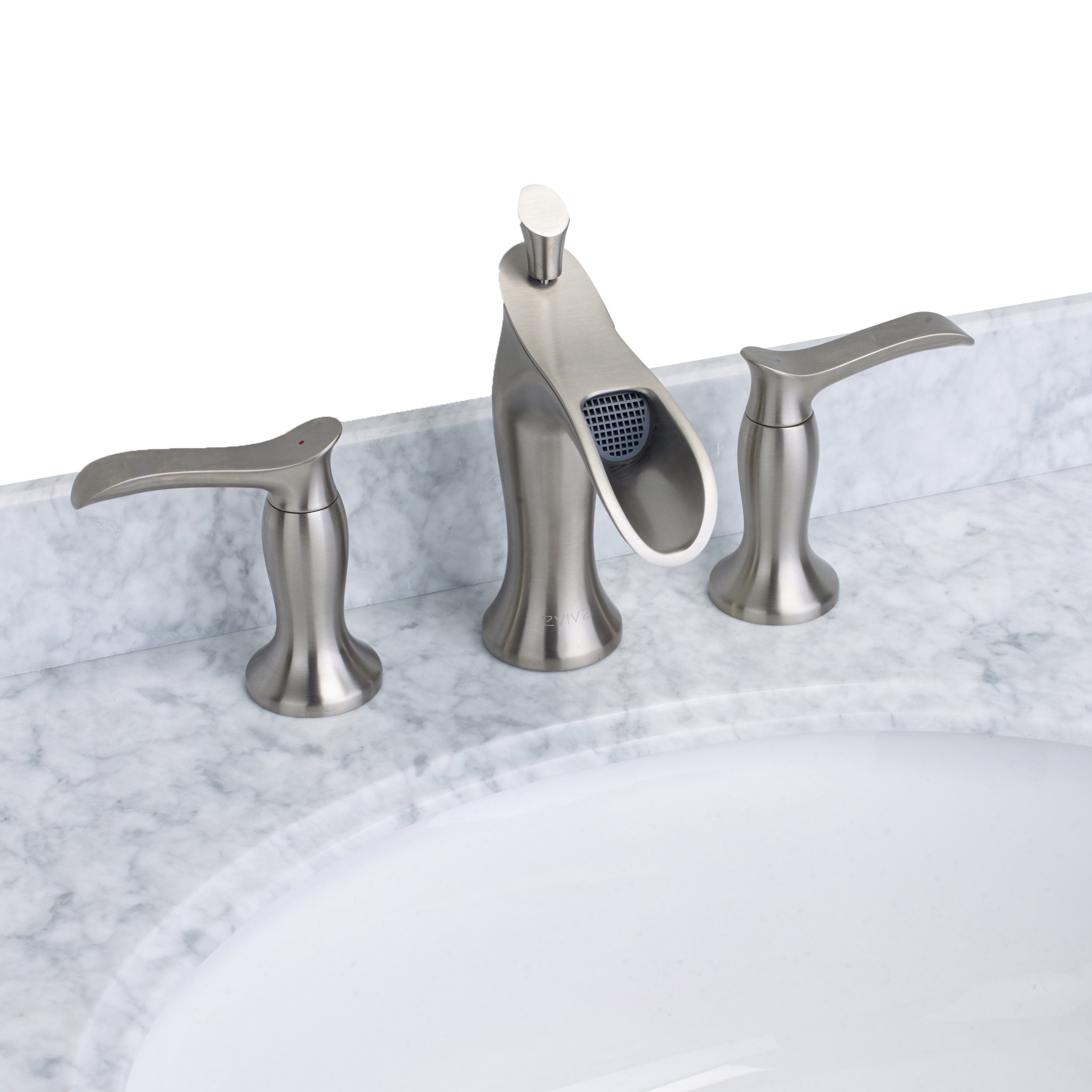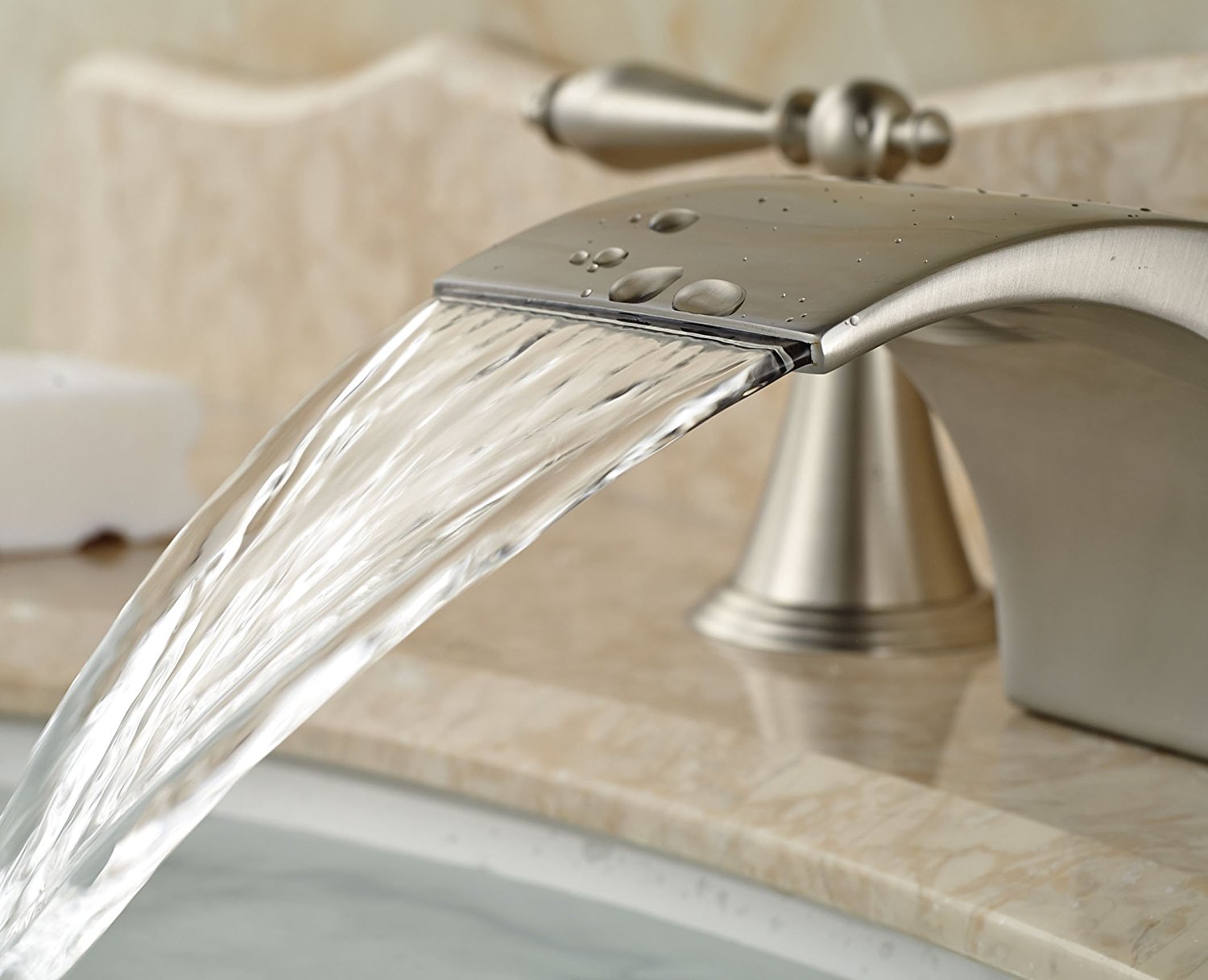Bathroom Faucet Types with 4-Inch Spread

A 4-inch spread refers to the distance between the centers of the hot and cold water holes in your sink. This standard measurement makes it easier to find compatible faucets and ensures a balanced look for your bathroom. There are various types of bathroom faucets with a 4-inch spread, each with its unique features and advantages.
Centerset Faucets
Centerset faucets are a classic choice for bathrooms. They feature a single, compact unit that includes both the hot and cold water controls and the spout. These faucets are typically installed on a single deck plate, simplifying the installation process.
Pros
- Simple design and easy to install.
- Cost-effective option compared to other faucet types.
- Wide range of styles to choose from, from traditional to modern.
Cons
- Limited functionality compared to other faucet types.
- Can be difficult to clean around the base of the faucet.
Widespread Faucets
Widespread faucets are characterized by their separate hot and cold water handles, which are spaced apart, typically between 6 to 8 inches. This design allows for greater control over water temperature and flow.
Pros
- Greater control over water temperature and flow.
- More contemporary and stylish appearance.
- Easier to clean around the base of the faucet.
Cons
- More expensive than centerset faucets.
- Can be more challenging to install.
Roman Tub Faucets
Roman tub faucets are designed specifically for freestanding tubs and feature a tall, elegant spout with separate handles. They are often made from high-quality materials like polished chrome or brushed nickel, adding a touch of luxury to the bathroom.
Pros
- Exquisite and luxurious design.
- Wide variety of styles and finishes.
- Can enhance the overall aesthetic of the bathroom.
Cons
- Expensive compared to other faucet types.
- Require a dedicated installation space near the tub.
Wall-Mount Faucets
Wall-mount faucets, as the name suggests, are mounted directly to the wall instead of the countertop. This design creates a clean and minimalist look, maximizing counter space and adding a touch of modern sophistication to the bathroom.
Pros
- Modern and sleek design.
- Maximizes counter space.
- Can be a good option for smaller bathrooms.
Cons
- More complex installation process.
- May require additional plumbing work.
Water Efficiency and Flow Rate
Water efficiency is an important factor to consider when choosing a bathroom faucet. Water-efficient faucets use less water without compromising performance. The flow rate of a faucet is measured in gallons per minute (GPM). Many modern faucets are designed with flow rates of 1.2 GPM or less, meeting EPA WaterSense standards.
A faucet with a lower flow rate can significantly reduce water consumption without impacting the user experience.
Brushed Nickel Finish

Brushed nickel is a popular finish for bathroom faucets, offering a unique blend of aesthetics and durability. It provides a distinctive look that complements various bathroom styles while offering a resilient surface that can withstand the rigors of daily use.
Appearance and Texture
Brushed nickel achieves its distinctive look through a process called “brushing.” This involves using a fine-grit abrasive to create a series of parallel lines across the surface of the nickel. The result is a subtle, yet noticeable texture that reflects light differently than a polished nickel finish. The brushed lines create a warm, inviting, and sophisticated look, making it a versatile choice for various bathroom designs.
Aesthetics in Bathroom Design
Brushed nickel’s unique texture and appearance contribute significantly to the overall aesthetic of a bathroom. Its subtle sheen complements both traditional and modern bathroom styles. The warm, muted tone of brushed nickel can create a sense of calm and sophistication, enhancing the ambiance of the space.
Durability and Maintenance
Brushed nickel faucets are known for their durability. The brushed finish provides a protective layer that resists scratches, fingerprints, and water spots better than polished nickel. However, it is essential to maintain the finish properly to preserve its appearance. Regular cleaning with a soft cloth and mild soap is recommended. Avoid abrasive cleaners and harsh chemicals, as these can damage the brushed finish.
Longevity Compared to Other Finishes
While brushed nickel offers excellent durability, its longevity can vary depending on usage and maintenance. Compared to chrome, which is known for its resistance to tarnishing and corrosion, brushed nickel may require more frequent cleaning to maintain its pristine appearance. However, brushed nickel is more resistant to fingerprints and water spots than chrome, making it a suitable choice for high-traffic areas. Oil-rubbed bronze, while aesthetically appealing, can be more prone to tarnishing and require more frequent cleaning and polishing.
Installation and Maintenance Considerations: Bathroom Faucets 4 Inch Spread Brushed Nickel

Installing a 4-inch spread bathroom faucet is a straightforward process that can be completed with basic plumbing knowledge and the right tools. However, proper installation and regular maintenance are crucial for ensuring optimal performance and longevity.
Installation Process
Installing a 4-inch spread bathroom faucet involves several steps, ensuring proper alignment and connection.
- Turn off the water supply: Locate the shut-off valves for the hot and cold water lines supplying the sink and turn them off completely. This prevents water from flowing during installation and avoids potential flooding.
- Remove the old faucet: Unscrew the old faucet’s mounting nuts and remove it from the sink. If necessary, use a wrench or pliers to loosen stubborn connections.
- Prepare the sink: Clean the mounting holes in the sink to remove any debris or old sealant. This ensures a clean and secure connection for the new faucet.
- Install the new faucet: Place the new faucet in the mounting holes and align it with the sink. Attach the mounting nuts and tighten them securely, ensuring the faucet is level and stable.
- Connect the water lines: Attach the hot and cold water lines to the faucet’s inlets, ensuring a tight connection. Use plumber’s tape on the threads to prevent leaks.
- Turn on the water supply: Slowly turn on the water supply valves and check for leaks. Tighten any loose connections if necessary.
- Test the faucet: Run the water to test the faucet’s functionality, ensuring the hot and cold water flow correctly and there are no leaks.
Tools and Materials, Bathroom faucets 4 inch spread brushed nickel
The following tools and materials are typically required for installing a 4-inch spread bathroom faucet:
| Tools | Description |
|---|---|
| Adjustable wrench | For loosening and tightening nuts and fittings. |
| Channel-lock pliers | For gripping and turning stubborn connections. |
| Plumber’s tape | To seal threads and prevent leaks. |
| Level | To ensure the faucet is installed level and straight. |
| Screwdriver | For attaching the faucet handle and other components. |
| Materials | Description |
|---|---|
| New 4-inch spread bathroom faucet | The main component for the installation. |
| Hot and cold water lines | To connect the faucet to the water supply. |
| Plumber’s putty | To seal the faucet base against the sink. |
| Optional: New supply lines | If the existing lines are old or damaged. |
Troubleshooting Tips
While installation is relatively straightforward, common issues can arise. Here are some troubleshooting tips for addressing leaks or other problems:
- Leaking faucet: If the faucet leaks, check the connections for loose nuts or fittings. Tighten them securely. If the leak persists, the faucet’s internal components may need replacement.
- Dripping faucet: A dripping faucet often indicates a worn-out washer or cartridge. Replacing these components usually resolves the issue.
- Low water pressure: Low water pressure can be caused by clogged aerator, sediment buildup in the pipes, or a faulty shut-off valve. Cleaning the aerator or addressing the underlying issue can improve water pressure.
Maintenance Tips
Regular maintenance is essential for keeping the faucet in optimal condition. Here are some practical tips:
- Clean the faucet regularly: Wipe down the faucet with a soft, damp cloth to remove dirt, grime, and mineral deposits. Avoid abrasive cleaners that can damage the brushed nickel finish.
- Clean the aerator: Remove the aerator from the spout and soak it in vinegar to remove mineral buildup. Rinse thoroughly and reattach the aerator.
- Lubricate the faucet: Apply a small amount of silicone lubricant to the faucet’s moving parts, such as the handle and stem, to prevent squeaking and ensure smooth operation.
- Inspect for leaks: Regularly check the faucet for leaks, especially around the connections. Tighten any loose fittings to prevent water damage.